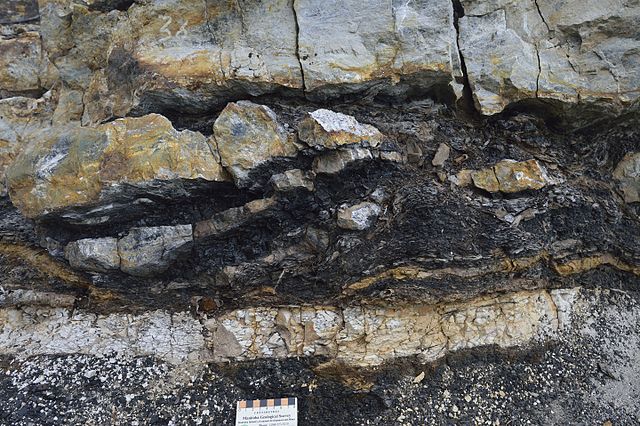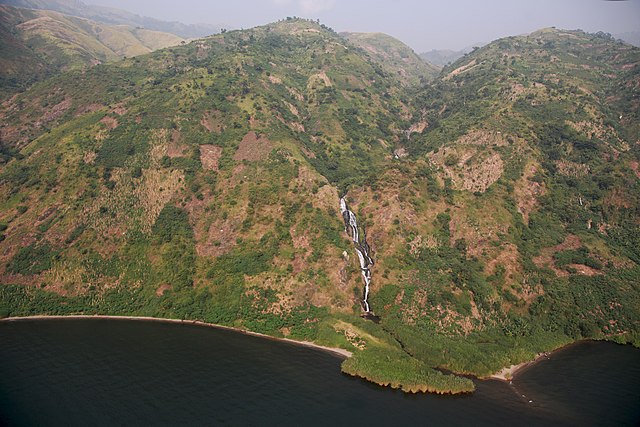Cryptodidymosphaerites is an extinct monotypic genus of pleosporale fungus of uncertain family placement. When described it contained the single species Cryptodidymosphaerites princetonensis. The genus is solely known from the Early Eocene, Ypresian aged, Princeton Chert deposit of the Allenby Formation. Cryptodidymosphaerites is one of only three described fossil fungus species found in the Princeton Chert, and is a hyperparasite of Palaeoserenomyces allenbyensis, itself a tar spot-like parasite of the fossil palm Uhlia.
Close up of Princeton Chert outcrop showing volcanic ash (white layer at base), peaty coal (dark layer), and Chert layers (grey). Layer 36 is labelled.
Virunga Mountains over Lake Edward
The Pleosporales is the largest order in the fungal class Dothideomycetes. By a 2008 estimate, it contained 23 families, 332 genera and more than 4700 species. The majority of species are saprobes on decaying plant material in fresh water, marine, or terrestrial environments, but several species are also associated with living plants as parasites, epiphytes or endophytes. The best studied species cause plant diseases on important agricultural crops e.g. Cochliobolus heterostrophus, causing southern corn leaf blight on maize, Phaeosphaeria nodorum causing glume blotch on wheat and Leptosphaeria maculans causing a stem canker on cabbage crops (Brassica). Some species of Pleosporales occur on animal dung, and a small number occur as lichens and rock-inhabiting fungi.
Pleosporales



